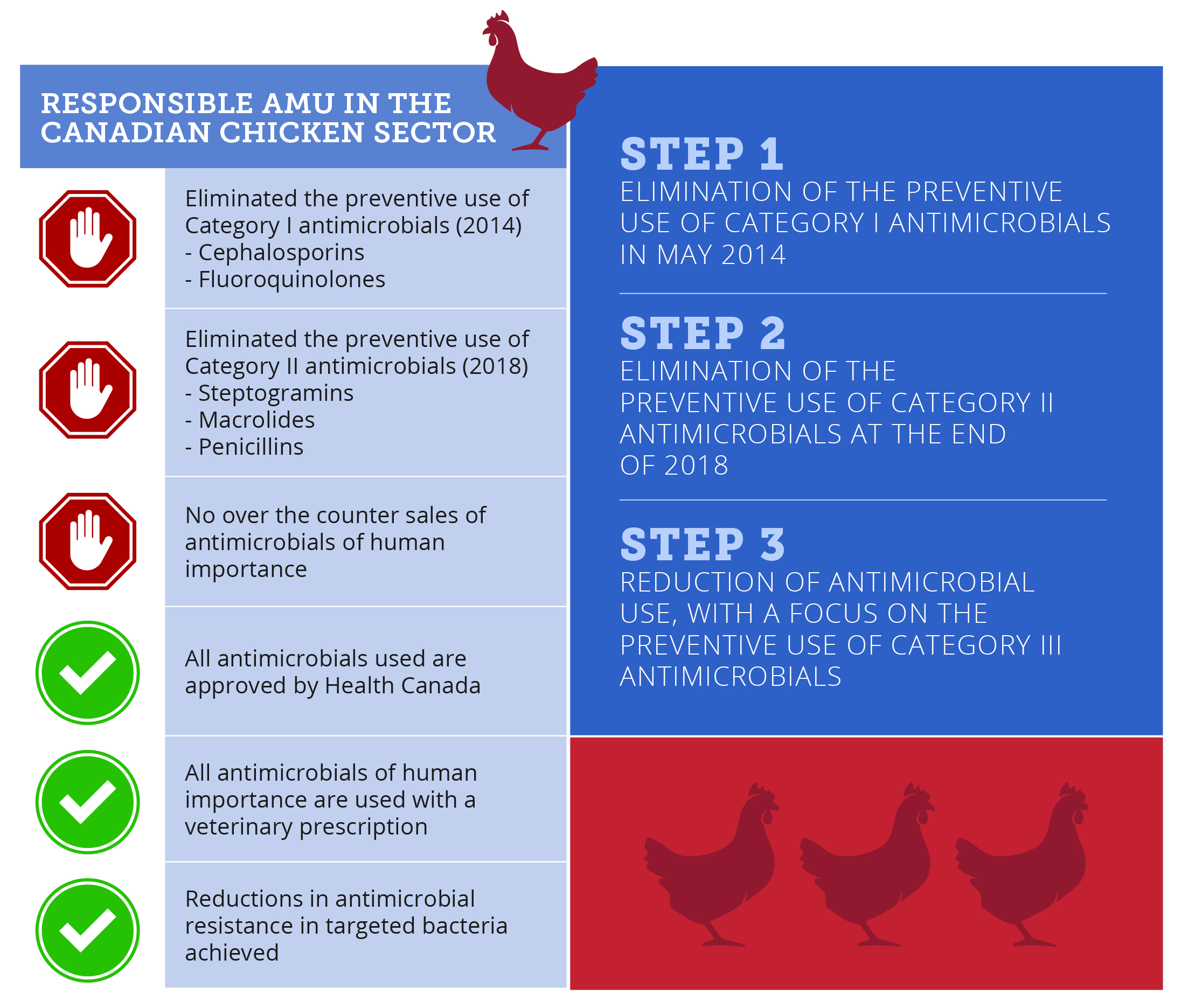


 Français
Français


Chicken Farmers of Canada (CFC) has compiled recent surveillance results to promote the success of its Responsible Antimicrobial Use (AMU) Strategy.
With data from the Canadian Integrated Program for Antimicrobial Resistance Surveillance (CIPARS) of the Public Health Agency of Canada (PHAC), the surveillance results demonstrate a reduction in antimicrobial use and antimicrobial resistance.
CIPARS indicates:
All antimicrobial use indicators tracked by CIPARS decreased in 2021 compared to 2019:
These results highlight the success of efforts by the Canadian chicken sector to ensure responsible use of antimicrobials.
The Responsible AMU Strategy has been developed to provide a sustainable means of meeting consumer expectations while protecting the health and welfare of birds. CFC’s strategy is not a “Raised Without the use of Antimicrobials” (RWA) strategy. An RWA strategy for the entire sector is neither sustainable nor ethical, as these are important tools for farmers and veterinarians to uphold their duty to protect bird health and welfare. Antimicrobial use in agriculture will continue to play an important role in ensuring animal health and welfare.
The results of the CFC Responsible AMU Strategy are being shared with farmers, stakeholders, supply chain partners, and government to highlight the success of efforts by the Canadian chicken sector as part of the Pan-Canadian Action Plan on Antimicrobial Resistance.
